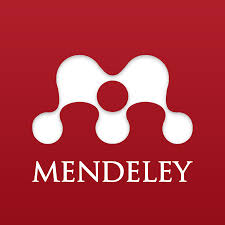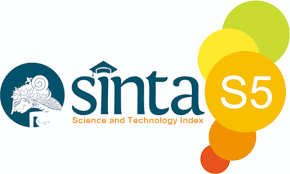Pemetaan Tingkatan Cuaca Ekstrim Masing-Masing Kecamatan di Kota Kupang
DOI:
https://doi.org/10.30872/geoedusains.v2i1.450Keywords:
mapping, extreme weather, sub-district in Kupang CityAbstract
Extreme weather is one of the natural disasters that occur in Kupang City, East Nusa Tenggara Province. Like other natural disasters, extreme weather also has a detrimental impact on people's lives. The purpose of this study was to determine the extent of extreme weather levels in each sub-district in Kupang City with mapping. This research is included in quantitative descriptive research, then the population and the sample used is Kupang City. The data collection method used the Landsat 8 OLI image interpretation and the data trajectory model. The data analysis technique used overlay analysis with the division of three classes of extreme weather levels, low, medium, and high. Based on the research results, it is 79.53% or with an area of 143.399 km2, Kupang is included in the extreme weather area with high criteria. The sub-district has the largest percentage range of high-level extreme weather in Kupang City is the Kota Lama sub-district. Meanwhile, the sub-district has the largest percentage of area to extreme weather with a low level is Alak sub-district.
Downloads
References
Badan Meteorologi Klimatologi dan Geofisika. 2010. “Prosedur Standar Operasi Pelaksanaan Peringatan Dini Pelaporan Dan Diseminasi Informasi Cuaca Ekstrim.” : 1–16.
Calliari, Elisa, Swenja Surminski, and Jaroslav Mysiak. 2019. The Politics of (and Behind) the UNFCCC’s Loss and Damage Mechanism. Springer : Switzerland.
Caraka, Rezzy Eko, Hasbi Yasin, and Suparti. 2015. “Pemodelan Tinggi Pasang Air Laut Di Kota Semarang Dengan Menggunakan Maximal Overlap Discrete Wavelet Transform (MODWT).” Jurnal Meteorologi Klimatologi Dan Geofisika 2(2): 104–14.
Darmayanti, I Gusti Ayu Diah Novita Yanti dan Ni Putu Ayu. 2019. “Pengaruh Profitabilitas, Ukuran Perusahaan, Struktur Modal, Dan Likuiditas Terhadap Nilai Perusahaan Makanan Dan Minuman.” Jurnal Managemen 8(4): 2297–2324.
Fahrimal, Yuhdi, Muhammad Reza, and Afrizal Tjoetra. 2019. “Revolusi Industri 4.0 Dalam Penguatan Kesiapsiagaan Bencana Di Indonesia.” Communication 10(2): 128.
Hadi, Hasrul. 2019. “Penguatan Kesiapsiagaan Stakeholder Dalam Pengurangan Resiko Bencana Gempabumi.” Geodika 3(1): 30–40.
Kurniawan, Pande Made Rony. 2018. “Analisis Cuaca Ekstrem Terkait Bencana Hidrometeorologi Di Jayapura (Studi Kasus Hujan Lebat Tanggal 22 Februari 2014).” Jurnal Meteorologi Klimatologi dan Geofisika 5(3): 1–13.
Listyani R.A., T. 2019. “Criticise of Van Zuidam Classification : A Purpose of Landform Unit.” 2019(November): 332–37.
Mananohas, Maharani, Maria D. Bobanto, and Ferdy. 2019. “Hubungan Cuaca Dan Tanaman Pangan Menggunakan Regresi Linear Di Kota Tondano.” Jurnal Matematika dan Aplikasi 8(2): 169–75. https://ejournal.unsrat.ac.id/index.php/decartesian.
Mirawati, Tika Dhiyani, Hasbi Yasin, and Agus Rusgiyono. 2013. “Prediksi Curah Hujan Dengan Metode Kalman Filter (Studi Kasus Di Kota Semarang Tahun 2012).” JURNAL GAUSSIAN 2(2012): 239–48.
Ningsih, Dewi Handayani Untari. 2012. “Metode Thiessen Polygon Untuk Ramalan Sebaran Curah Hujan Periode Tertentu Pada Wilayah Yang Tidak Memiliki Data Curah Hujan.” Jurnal Teknologi Informasi DINAMIK Volume 17(No 2): 154–63.
Norman, P.L.B, and M.Sc Riwu Kaho, SP. 2014. Panduan Interpretasi Dan Respon Informasi Iklim Dan Cuaca Untuk Petani Dan Nelayan. Kupang, Nusa Tenggara Timur: Perkumpulan Pikul-Kupang.
Purwanto, Endi Hari, and Reza Lukiawan. 2019. “Parameter Teknis Dalam Usulan Standar Pengolahan Penginderaan Jauh: Metode Klasifikasi Terbimbing.” Jurnal Standardisasi 21(1): 67–78.
Ridwan, M. A. et al. 2018. “Applications of Landsat-8 Data: A Survey.” International Journal of Engineering and Technology(UAE) 7(4): 436–41.
Vera L.S. Arrudaa, b, Valderli J. Piontekowskia, Ane Alencara, Reginaldo S. Pereirab, Eraldo A. T. Matricardi. 2021. “An Alternative Approach for Mapping Burn Scars Using Landsat Imagery, Google Earth Engine, and Deep Learning in the Brazilian Savanna | Enhanced Reader.” Remote Sensing Application Society and Environtment 22(100472): 1–11.
Zhou, Lei, Xianhua Wu, Zeshui Xu, and Hamido Fujita. 2018. “Emergency Decision Making for Natural Disasters: An Overview.” International Journal of Disaster Risk Reduction 27: 567–76.










